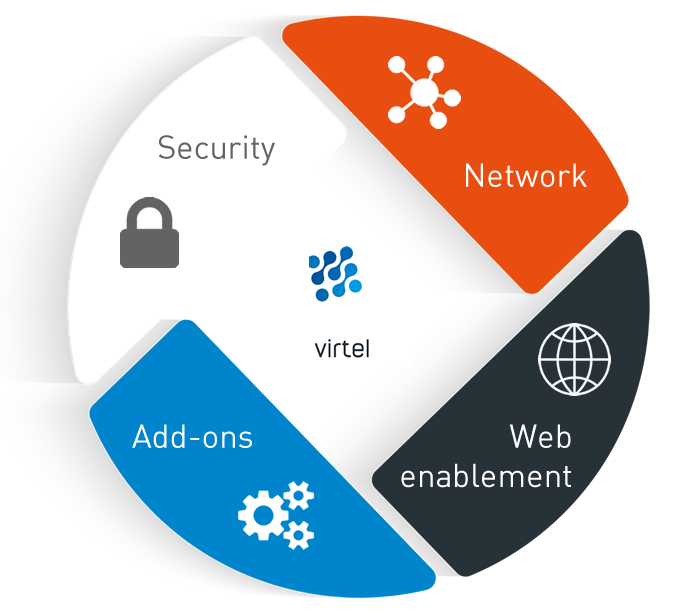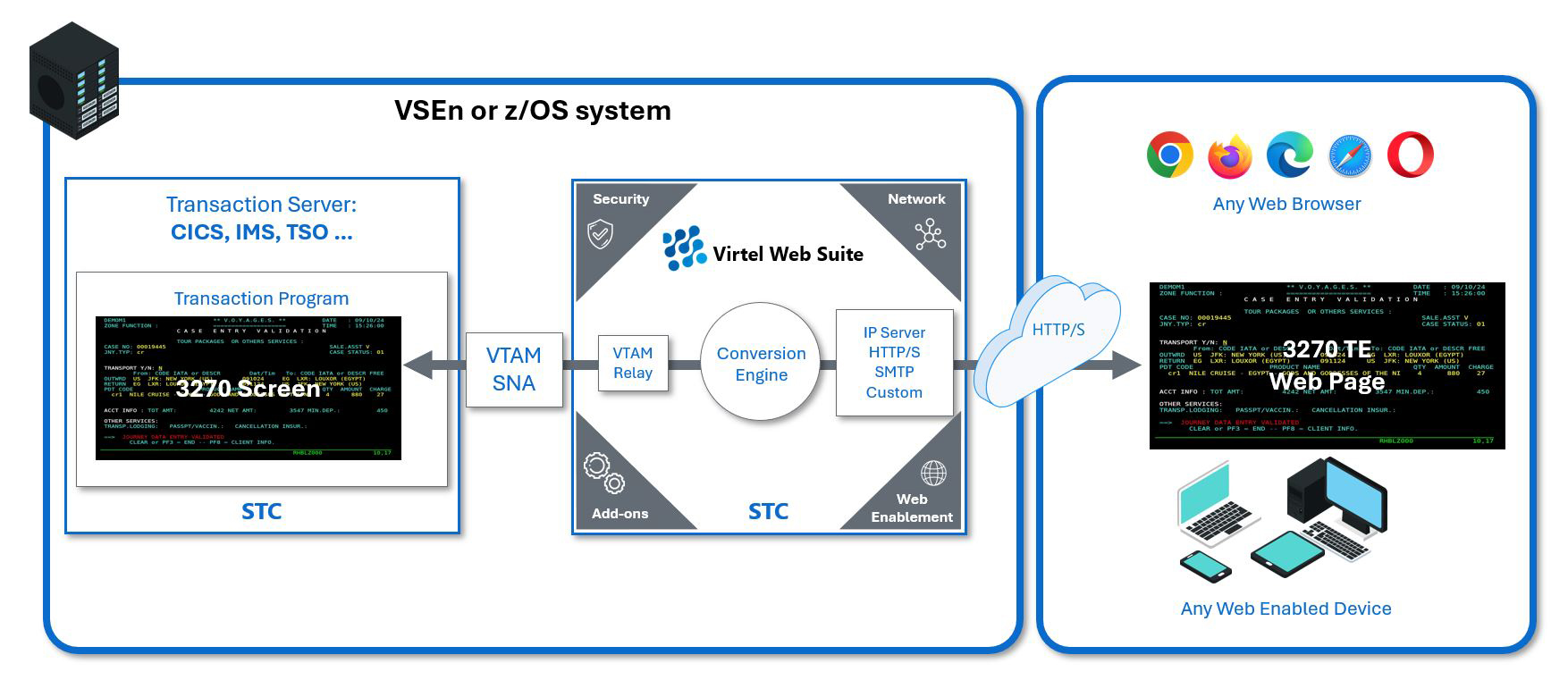The technology behind Virtel
Virtel architecture: at the heart of mainframe systems

Network
Virtel is a universal connection platform that allows central IBM z/OS or z/VSEn systems to achieve bi-directional exchanges. Virtel runs directly on the mainframe and requires no particular third party equipment.
Virtel supports the following standard protocols:
It also relies on some proprietary protocols such as VIRPASS and VIRXM in order to allow specific dialog within the z/OS system itself.
Virtel supports protocol conversions and translation between ASCII and EBCDIC. Support for U-TF8 and UTF-16 is also provided.
In standard mode, Virtel is compatible with the following character sets:
CP037, CP273, CP277, CP278, CP280, CP284, CP285, CP297, CP500, CP870, CP871,
as well as the following DBCS character sets:
Web-enablement
Thanks to Virtel, any terminal featuring a web browser can access any 3270 application hosted on the mainframe* without any alteration made to its core program.
This “web access” feature, which is based on collaborative exchanges between the central system and the browser-embedded JavaScript code, works on any web browser and requires no plug-in, no Java applets, no middleware and no heavy-client.
It provides the same flexibility and fluidity of communication than those offered by traditional 3270 emulators, much to the users’ comfort.
Virtel can also visually redesign a 3270 application to make it look like a pure web program, still and always preserving its original legacy code. This process is scalable, as one can choose to remodel only part or all of the application’s 3270 “green-screens”. Besides better basic ergonomics suited for the web, this process enriches the screens with dropdown lists, selection menus or buttons. Moreover, additional features that are impossible to achieve in 3270 mode can be enabled, like setting limit values for a field or hide parts of the original screen.
Finally, Virtel can answer another major challenge, as it is able to serve mainframe applications as web services, and also allow them to collect data on a remote server. These exchanges can be performed in TEXT, BINARY, JSON, XML modes, or any other specific format. In this matter, Virtel is in charge of the overall management of communications, protocol conversions and processing of formats.
* Applications using GDDM are not supported
Security
Virtel has its own internal security system, which can function on its own, or by interaction with the leading tools on the market such as RACF, TOP-SECRET and ACF2 (in fact, Virtel is used this way most of the time). For platforms using RACF, Virtel is compatible with PassTicket generation.
Due to its architecture and position in the IS structure, Virtel represents an uncommon interface between mainframe applications and the outside world. This keeps Virtel safe from attacks that usually affect traditional HTTP servers.
When using SSL, Virtel builds on the z/OS system’s AT-TLS layers, making it constantly compliant with the most recent security levels in this matter (TLS 1.3). Virtel also fits seamlessly with all Single Sign-On (SSO) gateways supporting PassTicket, SAML or OIDC.
Virtel benefits from a wide range of components to grant or deny a request, from caller address identification to data flow analysis. When browsing within an application is needed, this can be automated using scenarios that run directly on the mainframe, with no exchanges visible on the network whatsoever.
Add-ons
These are a few configurations in which Virtel was implemented in a slightly different/non-conventional way:

